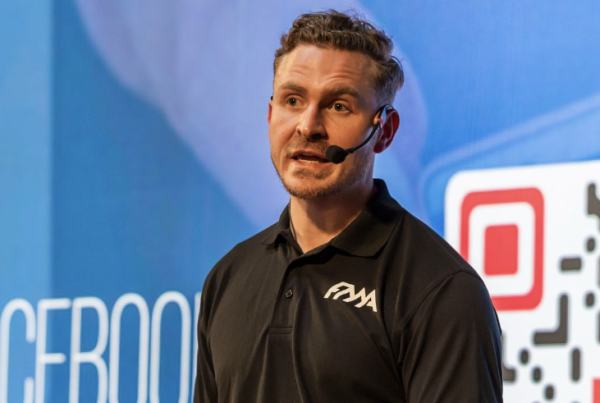A ‘tough’ client who makes no progress needn’t stay that way, writes coaching programme developer Krista Scott-Dixon. Some specific techniques can transform the way you interact with them, as well as their success.
We’ve all had them: the proverbial ‘tough clients’. They can be frustrating, annoying and even anxiety-provoking. They can make you question your coaching skills. You might find yourself avoiding or dreading their calls, emails and scheduled training sessions. Don’t despair. There is another way – a way that will not only get you feeling better as a coach, but will genuinely get results for those tricky clients.
What’s a tough client?
At first, the answer to this question may seem obvious.
A tough client, you might think, is someone who:
- should follow your advice – but doesn’t
- should do things that move them towards their goals – but doesn’t
- should get results – but doesn’t.
Secretly, you might even ask yourself, “What the #$^! is wrong with them?”
You might compare these clients to other ‘easy’ clients you’ve trained – clients who were motivated, diligent, consistent and laser-focused on reaching their goals. You might secretly (or not so secretly) fantasise about ‘firing’ some of the toughest cases. Yet one thing you’ll notice looking at the short list above is that they’re a list of ‘shoulds’. In other words, they’re things that you want and expect to happen, but don’t.
Tough clients are rarely tough
In fact, few clients are truly ‘tough’ in the sense that there’s something so fundamentally difficult and dysfunctional about them that nearly any coach might fail. Most of the time, ‘tough clients’ are not ‘tough’ at all – there’s just a mismatch between expectations, skills and reality. In other words, usually one or more of the following is true:
- You and/or the client are expecting results that don’t match the client’s actual capacity to deliver those results. For instance, how can a client without strong food prep skills stick to a meal plan? How can a client who can’t stabilise their spine improve their squat?
- You’re lecturing, telling, advising, suggesting, and directing … rather than listening, understanding, exploring and collaborating. The more you push, the more clients will push back, and the less you comprehend what your client truly needs and wants.
- You and/or the client are starting from 100 and working backwards, rather than starting from 0 and working forwards. In other words, you and/or your client are looking for ‘perfect performance’ (however you may define that) and then finding all the ways the client doesn’t measure up to that standard, rather than starting from zero and finding (and celebrating) all the client’s small achievements and successes. You might get irritated with a client who ‘only’ works out twice a week, when in reality this is a victory for someone who may have previously never worked out.
- Your client isn’t ready, willing and/or able to think, feel or behave in the ways that they need in order to see progress. Perhaps they aren’t ready to change, or their mindset needs work, or they’re hesitant to give up old habits that are problematic but familiar. There may be very good reasons for this.
- Your client has other factors in their life that are getting in the way. Few of us are professional athletes that are paid to eat properly, train and recover, and for whom performance is a job. People’s lives are complex. They’re juggling a lot and often just trying to hold it all together.
- You want this more than your client does. They care maybe a 5/10, and you care a 10/10 (it’s your job to!) So, naturally, you urge, and push, and coax, and care really hard, and feel disappointed when they only give 50% effort.
How to start troubleshooting
You can spend your life mastering coaching and the art of helping people change. But here’s a starter guide.
- Accept reality, compassionately
Frustration is just arguing with reality. So give up the tug-of-war with facts. Instead, accept your clients as they are, right now. Try to empathise with their situation and what they might be struggling with. Paradoxically, compassionate acceptance is more likely to lead to change in the long run than judgement or criticism.
- Stop talking, start listening
Stop directing, lecturing, telling, suggesting and anything else that tries to push people in one direction or another. Instead, shut your mouth and open your ears. Ask good, curious questions. Look to understand your client and their story.
- Gather data before trying to solve problems
Hang back, get out your measurement tools and collect intel. For instance, if a client is having trouble finding time to work out, don’t lecture them on how important it is to exercise. Instead, ask them to try doing a time diary for a few days so you can both better understand how they are using their time. If a client tells you that a movement is uncomfortable, don’t tell them that it should be fine. Instead, get out the camera and record what’s happening. Go step by step. Look at the movement together.
- Start with what clients are truly ready, willing and able to do
Even if you’re the greatest trainer in the world, if a client isn’t ready, they won’t change.
- Look for (and correct) a skills deficit
Many problems happen simply because clients don’t have the skills they need in order to adopt the behaviours that will lead to their goals:
- Clients without basic planning skills can’t organise their time or anticipate problems, so they end up ‘too busy to exercise’.
- Clients without basic emotional management skills can’t cope with stress, so they end up calming down with a few drinks or a tub of ice cream.
- Clients without fundamental physical self-awareness can’t learn new movements or know when they are moving wrongly, so they end up injured or feeling awkward and incompetent in the gym.
- Clients who ‘can’t cook’ will have a hard time eating nutritiously and will frequently opt for take-aways.
- Ask yourself, what skills does my client need in order to a) understand and do a coaching task at the basic level?; and b) do the task well and consistently?
- Clients might need more life, movement and nutrition skills than you realise. Back up and teach those basic, segmental skills first.
- Recognise that ambivalence is natural and normal
Even if we want to change, we’ll have mixed feelings about it. That’s OK.
Help clients explore their ambivalence and the forces preventing them from changing, with an attitude of acceptance and curiosity. Look for what’s competing with the commitment your client wants to make. If they ‘can’t find time’ to work out, for instance, what else is competing for that time? What’s negotiable and what’s not?
- Recognise how your own coaching behaviour may create resistance
How urgent or anxious do you feel? How frustrated or pushy? How much do you care versus how much your clients care? How might you inadvertently be creating the resistance you’re feeling from clients, even (or especially) if you really, really want to help?
- Look for strengths and bright spots
As the song goes, “You’ve got to accentuate the positive …” Ask your client:
- What strengths or advantages do you already have that could help you?
- What do you enjoy and how can we build on that?
- What is already going well?
- Where do problems not happen?
- What have you noticed leading to a positive outcome? When are you better, even just a little bit?
Instead of pointing out a bunch of mistakes, relentlessly chase and highlight successes and possibilities. Then just try to do more of what’s already working. Assume your clients are resilient and resourceful.
- Collaborate with your client on finding solutions
Your job isn’t to be a one-stop solution shop. Your job is to help the clients generate their own solutions. Instead of “Here’s what we’ll do” or “You should ____”, try asking questions like:
- What’s worked in the past, even a little?
- Given this, what might be one small step you’d be willing to take towards your goals?’
- Realistically, with all that’s on your plate, what seems manageable for you right now?
If you want to give guidance, try this:
- I have some ideas, based on what you’ve said, but I’d like to hear your ideas first.
- When in doubt, pause
Take a breath. Ask yourself whether there is more to know, learn or understand about this client. Have you missed something? What additional data could you gather? Are you working with a full, rich picture of the client’s needs, wants, values, and priorities? Are you being client-centred (i.e., following the client’s agenda) or trainer-centred (i.e., pushing the client to what you want)?
Tough clients are mostly tough because we as coaches push against them. If you stop pushing and start dancing instead, following the clients’ leads, you may find that your clients get a lot ‘easier’ to work with!
Krista Scott-Dixon is the director of curriculum for Precision Nutrition. Previously, she was a professor at York University in Toronto, Canada, as well as a researcher for a public health institute. She is the co-author of The Essentials of Sport and Exercise Nutrition. Contact Krista at krista@precisionnutrition.com
This feature is produced in conjunction with Australian Fitness Network.
Where to next? Check out Water Fitness Progressions.







